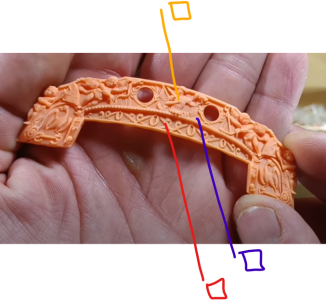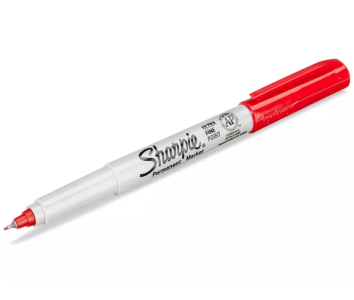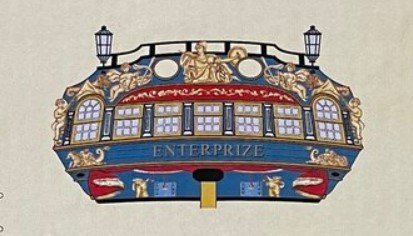Hi Jack
You and anyone interested in
Enterprise 1774 might find the following interesting. Sorry some of the text below copied in blue for some reason and I could not change it.
HMS Enterprise (1774 - 1807) / 28-gun frigate / Enterprise class
HMS Enterprise (also often spelled 'HMS Enterprize') was a 28 gun, 6th rate frigate built for the Royal Navy by the Royal Dockyard at Deptford.
She was the lead ship of the Enterprise class of 27 small sailing frigates.
The 6th rate was the smallest of the Royal Navy's rated ships and were the smallest ships which would normally be commanded by an officer with the rank of Captain and the 28-gun frigate was the smallest ship which met the Admiralty definition of 'Frigate'.
Construction:
HMS Enterprise was built as part of Britain's response to the Falklands Crisis of 1770, which goes to show that disputes over the sovereignty of the Falkland Islands are nothing new. Britain and Spain almost went to war in a territorial dispute which was never properly resolved. The reason the threatened war between Britain and Spain did not occur was because the French refused to support Spain. This forced the Spanish to negotiate and the agreement they and the British came to in 1771 totally sidestepped the issue of sovereignty and this was to be the source of future trouble which continues to this day. In the event, the financial pressures on the British Government arising from the start of the American War of Independence caused the British to abandon many overseas possessions and this included the Falkland Islands in 1776. Many years later, what is now Argentina gained independence from Spain and inherited Spain's claim over the islands. The British claim never to have relinquished their claim over the islands, they had just vacated the settlements they had established there. In 1833, the Falkland Islands were re-occupied by the British.
Designed by John Williams, then Surveyor of the Navy at Deptford Royal Dockyard, HMS Enterprise was ordered in January 1771. Her keel was laid on Monday 9th September 1771. Her construction was overseen by Adam Hayes, Master Shipwright at Deptford and the ship was launched into the River Thames, her hull complete on Wednesday 24th August 1774.
On completion, HMS Enterprise was a ship of 593 tons.
She was 120'6" long on her gundeck and was 33'6" wide across her beam.
She was armed with 24 9pdr long guns on her gundeck, 4 3pdr long guns on her quarterdeck and was also fitted with 12 half-pound swivel guns dotted around her upper deck.
She was manned by a crew of 200 officers, men and boys.
The ship commissioned under Captain Sir Thomas Rich in April 1775.
During her construction she was also the subject of a pair of oil paintings by Joseph Marshall, simulating her ship model but actually drawn from her designs - these were completed in 1777 as part of a series of such paintings commissioned by George III of the United Kingdom. The pair showing Enterprise are now split between the National Maritime Museum and the Science Museum.
Service:
By the time the ship was ready for sea, the American colonies had erupted into open revolt and the American War of Independence was underway. HMS Enterprise was thrust straight into the typical duties of a small frigate, those of patrolling and escorting convoys. In 1778, France openly joined in the war on the American side, looking to regain possessions lost in the previous Seven Years War in addition to assisting the rebels in ejecting the British from mainland North America.
On 21st January 1780, HMS Enterprise received a new commander, Captain Patrick Leslie. Captain Rich had been appointed to command the ex-Spanish 70 gun third rate ship HMS Princessa, which had been captured during Rodney's victory over the Spaniards at the 'Moonlight Battle' of Cape St Vincent. Leslie had just been promoted to Captain after having served in the 20 gun Xebec HMS Minorca as Master and Commander.
On 7th June 1780, HMS Enterprise was one of a number of British warships bottled up in the harbour at Gibraltar by the Spanish in the Great Seige of Gibraltar. At about 1.30am on that day, HMS Enterprise's lookouts spotted a number of strange vessels drifting towards the harbour. On being challenged by HMS Enterprise, the strange vessel's crews set them on fire, abandoned them in their boats and escaped. Fireships and an attack by them was one of a sailor's worst nightmares in the age of wooden sailing ships. Any wooden sailing ship was never any more than a few moments away from becoming an uncontrollable inferno should fire break out. That stated, the officers and crew of HMS Enterprise reacted quickly to the potential disaster drifting down towards them. Captain Leslie ordered that a three-gun salvo be fired to warn other ships in the harbour. He ordered that his ship's anchor cable be cut to allow his ship to drift away from the burning fireships. Mindful of the Spanish fleet blockading the harbour waiting to intercept any British ships attempting to escape, Captain Leslie ordered his gunners to fire on the incoming fireships in an attempt to sink them. When that didn't work, her seamen took to the boats. HMS Enterprise's sailors boarded the burning enemy fireships and attached tow cables allowing them to tow the fireships out of harms way.
In July 1781, HMS Enterprise was ordered to return to the UK and paid off at Woolwich the following month for a refit. As well as a general repair and spruce-up, HMS Enterprise's refit saw her armament increased. The 4 3pdr guns on her quarterdeck were replaced by 4 6pdr long guns and 4 18pdr carronades. She was fitted with a further 2 18pdr carronades on her forecastle. Her refit was completed in December 1781 and the ship recommissioned under Captain John Payne. His previous command had been the ex-French 40 gun frigate HMS Artois, taken in 1780 by the 50 gun 4th rate ship HMS Romney.
On Saturday 27th April 1782, HMS Enterprise sailed for the Leeward Islands in the Caribbean. Captain Payne left HMS Enterprise in May 1782 to take command of the 50 gun Leopard class 4th rate ship HMS Leander. He was replaced by Captain William Carnegie. Carnegie's previous command had been the ex-Dutch ship De Graaf. She had been captured during Rodney's seizure of St Eustacius and had been taken into the Royal Navy under the name HMS St Eustacius.
On Friday 4th October 1782, HMS Enterprise captured the American privateer USS Mohawk. That vessel, armed with 20 6pdr guns had only been issued with a Letter of Marque the previous month and had yet to capture any enemy vessels. She was taken into the Royal Navy as an 18 gun ship-sloop, HMS Mohawk.
In October 1781, General the Lord Cornwallis had surrendered to the Franco-American forces beseiging Yorktown after the failure of the Royal Navy to secure Chesapeake Bay. This had rendered the British position in mainland North America untenable. The war had never been popular at home in Britain. King George III wanted to fight on, but he had no support in Parliament. Peace negotiations between the combatant nations in the war had started in April 1782 and concluded with the signing of the Treaty of Paris in September 1783. This brought the war to an end. In May 1784, HMS Enterprise paid off into the Ordinary at Deptford.
In 1790, Britain and Spain were once again brought to the brink of war over a territorial dispute. In this case, the British had established a trading post at Nootka Sound on Vancouver Island off the Canadian west coast. This was in defiance of a Spanish territorial claim to the entire western coastline of both American continents. Both sides made extensive preparations for war throughout 1790 and into 1791. Spain approached France looking for assurances of French assistance in any war against the British. The new revolutionary government in France decided that it had enough problems of it's own, and did not wish to become involved in another protracted and costly war with Britain. This forced the Spanish to negotiate with the British and the crisis, now known as the Spanish Armaments Crisis was resolved peacefully.
In the meantime, as part of the British preparations for war, HMS Enterprise was taken into the Royal Dockyard at Deptford in May 1790 and was converted into a
Receiving Ship, to be used as a base for the Impressment Service and for receiving recently pressed men before they could be assigned to a sea-going ship. In March 1791, HMS Enterprise was moved and moored off the Tower of London.
War broke out with France in February 1793 and from that time, any men pressed into service in the City of London would have passed into the Royal Navy via HMS Enterprise. On 25th March 1802, the French Revolutionary War was ended by the Treaty of Amiens. The peace didn't last long and war broke out again on 18th May 1803.
In April 1806, one of HMS Enterprise's sister ships,
HMS Resource, was renamed to HMS Enterprise and joined her off the Tower. The original ship was taken to the Royal Dockyard at Deptford and was broken up in 1807. Her sister the
HMS Resource renamed to HMS Enterprise, was broken up at 1817, so often the fate of the original HMS Enterprise is documented with the wrong year.










